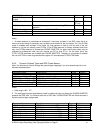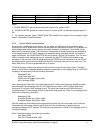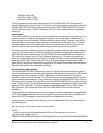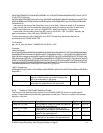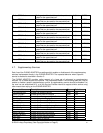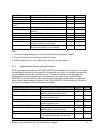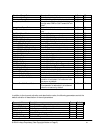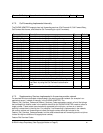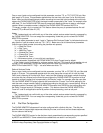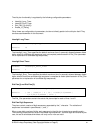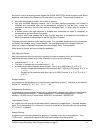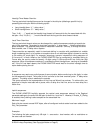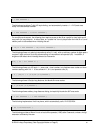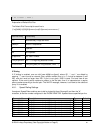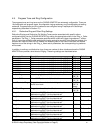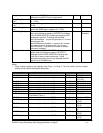
One or more *code can be configured into this parameter, such as *72, or *72|*74|*67|*82, etc. Max
total length is 79 chars. This parameter applies when the user has a dial tone (1st or 2nd dial tone).
Enter *code (and the following target number according to current dial plan) entered at the dial tone
triggers the PHONE ADAPTER to call the target number prepended by the *code. For example, after
user dials *72, the PHONE ADAPTER plays a prompt tone awaiting the user to enter a valid target
number. When a complete number is entered, the PHONE ADAPTER sends a INVITE to
*72<target_number> as in a normal call. This feature allows the proxy to process features like call
forward (*72) or BLock Caller ID (*67).
Notes:
- The *codes should not conflict with any of the other vertical service codes internally processed by
the PHONE ADAPTER. You can empty the corresponding *code that you do not want to PHONE
ADAPTER to process.
- You can add a parameter to each *code in "Features Dial Services Codes" to indicate what tone to
play after the *code is entered, such as *72`c`|*67`p`. Below are a list of allowed tone parameters
(note the use of back quotes surrounding the parmeter w/o spaces)
`c` = <Cfwd Dial Tone>
`d` = <Dial Tone>
`m` = <MWI Dial Tone>
`o` = <Outside Dial Tone>
`p` = <Prompt Dial Tone>
`s` = <Second Dial Tone>
`x` = No tones are place, x is any digit not used above
If no tone parameter is specified, the PHONE ADAPTER plays Prompt tone by default.
- If the *code is not to be followed by a phone number, such as *73 to cancel call forwarding, do not
include it in this parameter. In that case, simply add that *code in the dial plan and the PHONE
ADAPTER will send INVITE *73@..... as usual when user dials *73.
Referral Services Codes
One or more *code can be configured into this parameter, such as *98, or *97|*98|*123, etc. Max total
length is 79 chars. This parameter applies when the user places the current call on hold (by Hook
Flash) and is listening to 2nd dial tone. Each *code (and the following valid target number according
to current dial plan) entered on the 2nd dial-tone triggers the PHONE ADAPTER to perform a blind
transfer to a target number that is prepended by the service *code. For example, after the user dials
*98, the PHONE ADAPTER plays a special dial tone called the "Prompt Tone" while waiting for the
user the enter a target number (which is checked according to dial plan as in normal dialing). When a
complete number is entered, the PHONE ADAPTER sends a blind REFER to the holding party with
the Refer-To target equals to *98<target_number>. This feature allows the PHONE ADAPTER to
"hand off" a call to an application server to perform further processing, such as call park.
Notes:
- The *codes should not conflict with any of the other vertical service codes internally processed by
the PHONE ADAPTER. You can empty the corresponding *code that you do not want to PHONE
ADAPTER to process.
4.8. Dial Plan Configuration
The PHONE ADAPTER allows each line to be configured with a distinct dial plan. The dial plan
specifies how to interpret digit sequences dialed by the user, and how to convert those sequences
into an outbound dial string.
The PHONE ADAPTER syntax for the dial plan closely resembles the corresponding syntax specified
by MGCP and MEGACO. Some extensions are added that are useful in an end-point.
© 2004 Linksys Proprietary (See Copyright Notice on Page 2)
61



